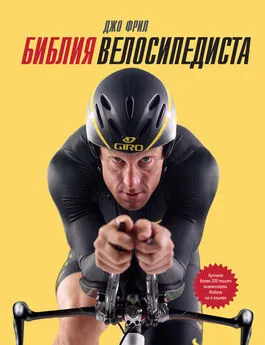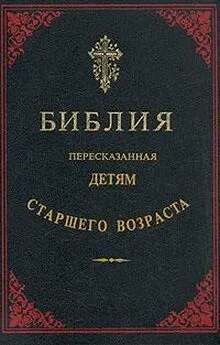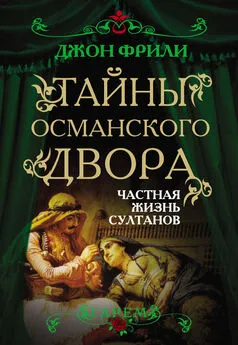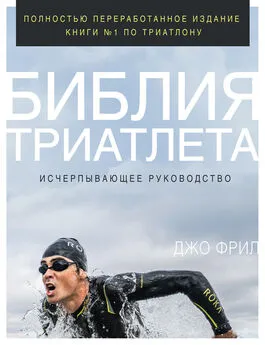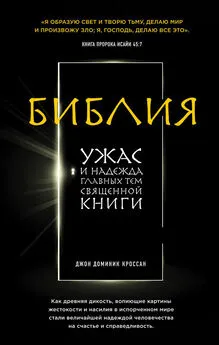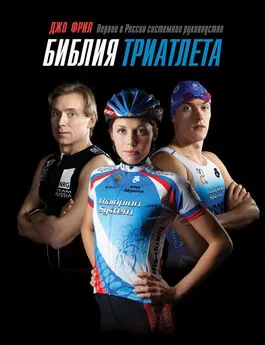Джо Фрил - Библия велосипедиста
- Название:Библия велосипедиста
- Автор:
- Жанр:
- Издательство:Манн Иванов Фербер
- Год:2011
- Город:Москва
- ISBN:978-5-91657-185-1
- Рейтинг:
- Избранное:Добавить в избранное
-
Отзывы:
-
Ваша оценка:
Джо Фрил - Библия велосипедиста краткое содержание
Библия велосипедиста - читать онлайн бесплатно полную версию (весь текст целиком)
Интервал:
Закладка:
Anderson, O. The Search for the Perfect Intensity Distribution // Cycling Research News 1, no. 10 (2004): 1, 4–10.
Angus, D. J., et al. Effect of Carbohydrate or Carbohydrate Plus Medium-Chain Triglyceride Ingestion on Cycling Time Trial Performance // Journal of Applied Physiology 88, no. 1 (2000): 113–119.
Antioxidants and the Elite Athlete // Proceedings of Panel Discussion, Dallas, Texas, May 27, 1992.
Antioxidants: Clearing the Confusion // IDEA Today (Sept. 1994): 67–73.
Avela, J., et al. Altered Reflex Sensitivity after Repeated and Prolonged Passive Muscle Stretching // Journal of Applied Physiology 84, no. 4 (1999): 1283–1291.
Baker, A. Training Intensity // Performance Conditioning for Cycling 2, no. 1 (1995): 3.
Balsam, P. D. Creatine Supplementation Per Se Does Not Enhance Endurance Exercise Performance // Acta Phys Scand 149, no. 4 (1993): 521–523.
Bemben, D. A., et al. Effects of Oral Contraceptives on Hormonal and Metabolic Responses during Exercise // Medicine and Science in Sports and Exercise 24, no. 4 (1992).
Berdanier, C. D. The Many Faces of Stress // Nutrition Today 2, no. 2 (1987): 12–17.
Billat V. L., A. Demarle, J. Slawinski, M. Paiva, and J. P. Koralsztein. Physical and Training Characteristics of Top-Class Marathon Runners // Medicine and Science in Sports and Exercise 33, no. 12 (2001): 2089–2097.
Billat, V. L., and J. P. Koralsztein. Significance of the Velocity at VO2Max and Time to Exhaustion at This Velocity // Sports Medicine 22, no. 2 (1996): 90–108.
Billat, V. L., et al. A Comparison of Time to Exhaustion at VO2Max in Elite Cyclists, Kayak Paddlers, Swimmers, and Runners // Ergonomics 39, no. 2 (1996): 267–277.
Billat, V. L., et al. Interval Training at VO2Max: Effects on Aerobic Performance and Overtraining Markers // Medicine and Science in Sports and Exercise 31, no. 1 (1999): 156–163.
Birkholz, D., ed. Training Skills. Colorado Springs, CO: United States Cycling Federation, 1991.
Blomstrand, E., et al. Administration of Branched Chain Amino Acids during Sustained Exercise – Effects on Performance and on Plasma Concentrations of Some Amino Acids // European Journal of Applied Physiology 62 (1991): 83–88.
Bompa, T. From Childhood to Champion Athlete . Sedona, AZ: Veritas Publishing, 1995.
Bompa, T. Periodization of Strength . Sedona, AZ: Veritas Publishing, 1993.
Bompa, T. Periodization, Theory and Methodology of Training . Champaign, IL: Human Kinetics, 1999.
Bompa, T. Physiological Intensity Values Employed to Plan Endurance Training // New Studies in Athletics 3, no 4 (1988): 37–52.
Bompa, T. Power Training for Sports . New York: Mosaic Press, 1993.
Bompa, T. Theory and Methodology of Training . Dubuque, IA: Kendall Hunt, 1994.
Borg, G. An Introduction to Borg’s RPE Scale. Ithaca, NY: Movement Publications, 1985.
Borysewicz, E. Bicycle Road Racing . Boulder: VeloNews, 1995.
Bouchard, C., and G. Lortie. Heredity and Endurance Performance // Sports Medicine 1 (1984): 38–64.
Bouchard, C., et al. Aerobic Performance in Brothers, Dizygotic and Monozygotic Twins // Medicine and Science in Sports and Exercise 18 (1986): 639–646.
Boulay, M. R., et al. Monitoring High-Intensity Endurance Exercise with Heart Rate and Thresholds // Medicine and Science in Sports and Exercise 29, no. 1 (1997): 125–132.
Brenner, I. K. M. Infection in Athletes // Sports Medicine 17, no. 2 (1994): 86–107.
Brown, C., and J. Wilmore. The Effects of Maximal Resistance Training on the Strength and Body Composition of Women Athletes // Medicine and Science in Sports and Exercise 6 (1974): 174–177.
Brown, R. L. Overtraining in Athletes: A Round Table Discussion // The Physician and Sports Medicine 11, no. 6 (1983): 99.
Brunner, R., and B. Tabachnik. Soviet Training and Recovery Methods. Pleasant Hill: Sport Focus Publishing, 1990.
Brynteson, P., and W. E. Sinning. The Effects of Training Frequencies on the Retention of Cardiovascular Fitness // Medicine and Science in Sports and Exercise 5 (1973): 29–33.
Brzycki, M. Strength Testing – Predicting a One-Rep Max from Reps to Fatigue // Journal of Physical Education, Recreation and Dance 64 (1993): 88–90.
Bull, Stephen J. Sport Psychology . Wiltshire, UK: Crowood Press, 2000.
Burke, E. Serious Cycling . Champaign, IL: Human Kinetics, 1995.
Cade, J. R., et al. Dietary Intervention and Training in Swimmers // European Journal of Applied Physiology 63 (1991): 210–215.
Cade, R., et al. Effects of Phosphate Loading on 2,3-Diphosphoglycerate and Maximal Oxygen Uptake // Medicine and Science in Sports and Exercise 16, no. 3 (1984): 263–268.
Cera, F. B., et al. Branched-Chain Amino Acid Supplementation during Trekking at High Altitude // European Journal of Applied Physiology 65 (1992): 394–398.
Chamari, K., et al. Anaerobic and Aerobic Peak Power and the Force-Velocity Relationship in Endurance-Trained Athletes: Effects of Aging // European Journal of Applied Physiology 71, nos. 2–3 (1995): 230–234.
Child, J. S., et al. Cardiac Hypertrophy and Function in Masters Endurance Runners and Sprinters // Journal of Applied Physiology 57 (1984): 170–181.
Clement, D. B., et al. Branched Chain Metabolic Support: A Prospective, Randomized Double-Blind Trial in Surgical Stress // Annals of Surgery 199 (1984): 286–291.
Cohen, J., and C. V. Gisolfi. Effects of Interval Training in Work-Heat Tolerance in Young Women // Medicine and Science in Sports and Exercise 14 (1982): 46–52.
Cordain, L. The Paleo Diet. New York: Wiley and Sons, 2002.
Cordain, L., and J. Friel. The Paleo Diet for Athletes . Emmaus, PA: Rodale Press, 2005.
Costill, D. Predicting Athletic Potential: The Value of Laboratory Testing // Sports Medicine Digest 11, no. 11 (1989): 7.
Costill, D., et al. Adaptations to Swimming Training: Influence of Training Volume // Medicine and Science in Sports and Exercise 23 (1991): 371–377.
Costill, D., et al. Effects of Repeated Days of Intensified Training on Muscle Glycogen and Swimming Performance // Medicine and Science in Sports and Exercise 20, no. 3 (1988): 249–254.
Costill, D. L., et al. Effects of Reduced Training on Muscular Power in Swimmers // The Physician and Sports Medicine 17, no. 2 (1985): 94–101.
Coyle, E. F., et al. Cycling Efficiency Is Related to the Percentage of Type I Muscle Fibers // Medicine and Science in Sports and Exercise 24 (1992): 782.
Coyle, E. F., et al. Physiological and Biomechanical Factors Associated with Elite Endurance Cycling Performance // Medicine and Science in Sports and Exercise 23, no. 1 (1991): 93–107.
Coyle, E. F., et al. Time Course of Loss of Adaptations after Stopping Prolonged Intense Endurance Training // Journal of Applied Physiology 57 (1984): 1857.
Cunningham, D. A., et al. Cardiovascular Response to Intervals and Continuous Training in Women // European Journal of Applied Physiology 41 (1979): 187–197.
Czajkowski, W. A Simple Method to Control Fatigue in Endurance Training // Exercise and Sport Biology, International Series on Sport Sciences 10 (1982): 207–212.
Daniels, J. Physiological Characteristics of Champion Male Athletes // Research Quarterly 45 (1974): 342–348.
Daniels, J. Training Distance Runners – A Primer // Sports Science Exchange 1, no. 11 (1989): 1–4.
Daniels, J., et al. Interval Training and Performance // Sports Medicine 1 (1984): 324–327.
David, A. S., et al. Post-Viral Fatigue Syndrome: Time for a New Approach // British Medical Journal 296 (1988): 696–699.
Dill, D., et al. A Longitudinal Study of 16 Champion Runners // Journal of Sports Medicine 7 (1967): 4–32.
Doherty, M. The Effects of Caffeine on the Maximal Accumulated Oxygen Deficit and Short-Term Running Performance // International Journal of Sports Nutrition 8, no. 2 (1998): 95–104.
Dragan, I., and I. Stonescu. Organism Recovery following Training. Bucharest: Sport-Turism, 1978.
Dressendorfer, R., et al. Increased Morning Heart Rate in Runners: A Valid Sign of Overtraining? // The Physician and Sports Medicine 13, no. 8 (1985): 77–86.
Drinkwater, B. L. Women and Exercise: Physiological Aspects // Exercise and Sports Science Review 12 (1984): 21–51.
Drinkwater, B. L., ed. Female Endurance Athletes . Champaign, IL: Human Kinetics, 1986.
Droghetti, P., et al. Non-Invasive Determination of the Anaerobic Threshold in Canoeing, Cycling, Cross-Country Skiing, Roller and Ice Skating, Rowing and Walking // European Journal of Applied Physiology 53 (1985): 299–303.
Dunbar, C. C., et al. The Validity of Regulating Exercise Intensity by Ratings of Perceived Exertion // Medicine and Science in Sports and Exercise 24 (1992): 94–99.
Eaton, S. B. Humans, Lipids and Evolution // Lipids 27, no. 1 (1992): 814–820.
Eaton, S. B., and M. Konner. Paleolithic Nutrition: A Consideration of Its Nature and Current Implications // New England Journal of Medicine 312, no. 5 (1985): 283–289.
Eaton, S. B., and D. A. Nelson. Calcium in Evolutionary Perspective // American Journal of Clinical Nutrition 54 (1991): 281S–287S.
Ekblom, B. Effect of Physical Training in Adolescent Boys // Journal of Applied Physiology 27 (1969): 350–353.
Elevation of Creatine in Resting and Exercised Muscle of Normal Subjects by Creatine Supplementation // Clinical Science 83 (1992): 367–374.
Elliott, Richard. The Competitive Edge. Mountain View, CA: TAFNEWS Press, 1991.
Ericsson, K. A., R. T. Krampe, and S. Heizmann. Can We Create Gifted People? // CIBA Foundation Symposium 178 (1993): 221–231.
Ernst, E. Does Post-Exercise Massage Treatment Reduce Delayed Onset Muscle Soreness? A Systematic Review // British Journal of Sports Medicine 32, no. 3 (1998): 212–214.
An Evaluation of Dietary Intakes of Triathletes: Are RDAs Being Met? // Brief Communications (November 1989): 1653–1654.
Evans, W., et al. Protein Metabolism and Endurance Exercise // The Physician and Sports Medicine 11, no. 7 (1983): 63–72.
Faria, I. E. Applied Physiology of Cycling // Sports Medicine 1 (1984): 187–204.
Fitts, R. H., et al. Effect of Swim-Exercise Training on Human Muscle Fiber Function // Journal of Applied Physiology 66 (1989): 465–475.
Fitzgerald, L. Exercise and the Immune System // Immunology Today 9, no. 11 (1988): 337–339.
Fowles, J. R., and D. G. Sale. Time Course of Strength Deficit after Maximal Passive Stretch in Humans // Medicine and Science in Sports and Exercise 29, no. 5 (1997): S155.
Francis, K. T., et al. The Relationship between Anaerobic Threshold and Heart Rate Linearity during Cycle Ergometry // European Journal of Applied Physiology 59 (1989): 273–277.
Frassetto, L. A., et al. Effect of Age on Blood Acid-Base Composition in Adult Humans: Role of Age-Related Renal Function Decline // American Journal of Physiology 271, no. 6–2 (1996): F1114–F1122.
Frassetto, L. A., et al. Potassium Bicarbonate Reduces Urinary Nitrogen Excretion in Postmenopausal Women // Journal of Endocrinology and Metabolism 82, no. 1 (1997): 254–259.
Читать дальшеИнтервал:
Закладка:
